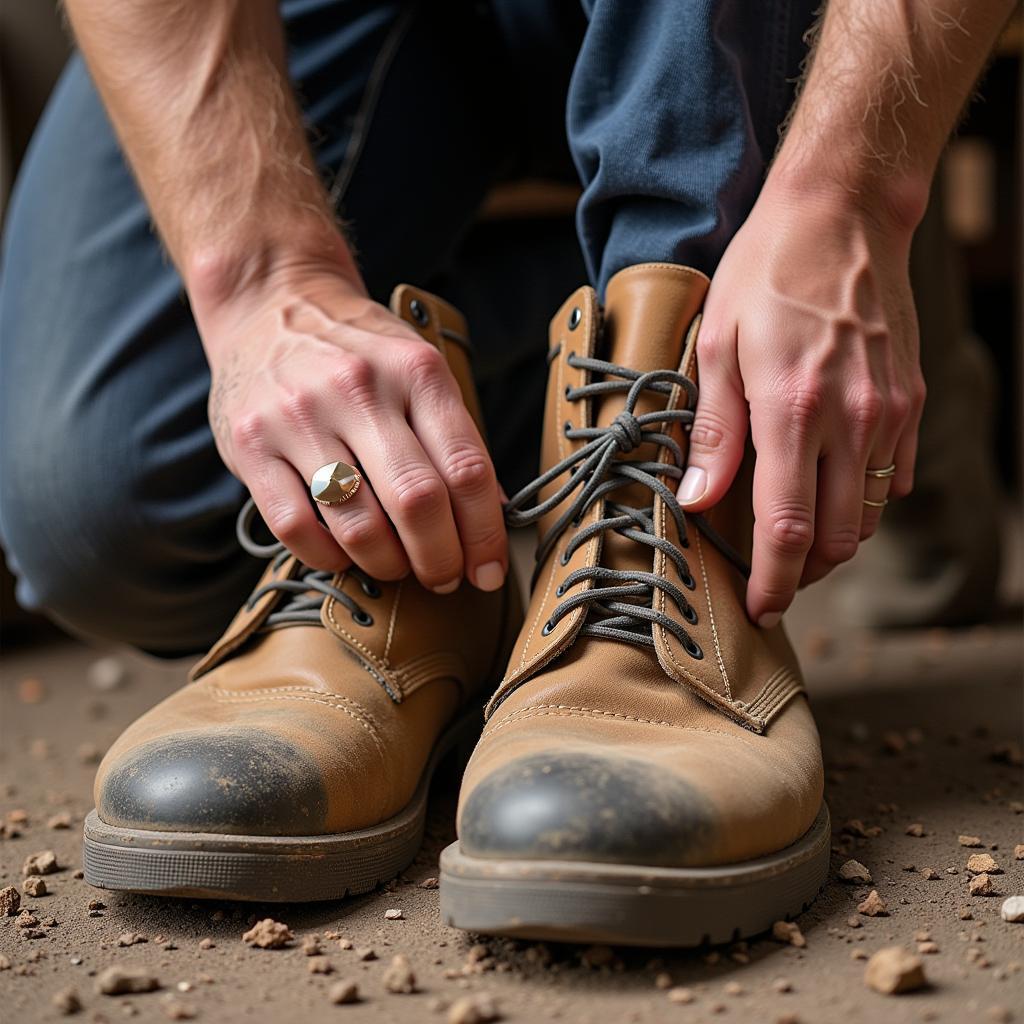Bell boots are a common piece of protective horse equipment. They are designed to protect the horse’s coronet band and heels from injury, particularly from overreaching or forging. But what exactly are bell boots, and when should you use them? This comprehensive guide will delve into everything you need to know about bell boots for horses, from their purpose and different types to proper fitting and care.
Understanding the Purpose of Bell Boots
Bell boots offer valuable protection for your horse’s sensitive lower legs. They primarily shield the coronet band and heels, preventing injuries caused by the horse striking its front feet with its hind feet. This action, often called overreaching or forging, can lead to painful cuts, bruises, and even lameness. Bell boots are essential for horses prone to this issue, especially during activities like jumping, dressage, and fast work. They also offer some protection during turnout, preventing injuries from kicks or stepping on uneven ground. Are bell boots always necessary? While not mandatory for every horse in every situation, they are a valuable preventative measure for many. belly band for horses
Types of Bell Boots and Their Uses
There are several types of bell boots available, each designed for specific purposes and offering varying levels of protection. Pull-on bell boots are the most common, easy to put on and take off. No-turn bell boots feature an asymmetrical design to prevent them from twisting, ensuring optimal protection. Overreach boots are specifically designed for horses that severely overreach, providing extended coverage up the pastern. The choice of material also plays a role. Rubber bell boots are durable and offer excellent protection, while neoprene boots provide more flexibility and breathability.
How to Choose and Fit Bell Boots
Choosing the right bell boots is crucial for ensuring your horse’s comfort and safety. Consider the horse’s discipline, level of activity, and individual conformation. For horses with sensitive skin, opt for softer materials like neoprene or lined rubber. Proper fit is paramount. The boots should be snug but not too tight, allowing for adequate ventilation. A too-loose boot can slip and become a hazard, while a too-tight boot can restrict circulation. what are bell boots for horses used for
Caring for Your Horse’s Bell Boots
Regular cleaning and maintenance are essential for prolonging the lifespan of your bell boots. Remove any dirt, debris, or mud after each use. Inspect the boots regularly for signs of wear and tear, replacing them as needed. Proper care will not only extend the life of the boots but also prevent potential irritation or infection for your horse. edema in horses belly
“Properly fitted bell boots are a valuable investment in your horse’s well-being,” says equine veterinarian Dr. Emily Carter. “They offer crucial protection and can prevent costly vet bills down the line.”
When Should You Use Bell Boots?
Bell boots are particularly beneficial during activities that increase the risk of overreaching, such as jumping, dressage, and fast work. They are also recommended for horses prone to interfering or forging. During turnout, bell boots can offer protection from kicks and other potential injuries. However, constant use can soften the heels and increase the risk of thrush. “It’s important to find a balance between protection and allowing the hooves to breathe,” advises farrier John Miller. “Rotating between using bell boots and allowing the hooves to go barefoot can help prevent issues.”  Cleaning Horse Bell Boots
Cleaning Horse Bell Boots
In conclusion, bell boots are an essential piece of equipment for many horses. They provide vital protection against injuries, ensuring your horse’s comfort and well-being. Understanding the different types, choosing the right fit, and providing proper care are key to maximizing their effectiveness. Remember to consult with your veterinarian or farrier for personalized advice on using bell boots for your horse. lymphatic blockage in horses belly
FAQ
-
What are bell boots used for on horses? Bell boots protect the horse’s coronet band and heels from injury, primarily from overreaching or forging.
-
How do I choose the right size bell boots? Measure the circumference of your horse’s pastern just above the hoof and consult the manufacturer’s sizing chart.
-
Can horses wear bell boots all the time? Continuous use is not recommended as it can soften the heels. Rotate use to allow the hooves to breathe.
-
What are the different types of bell boots? Common types include pull-on, no-turn, and overreach boots, available in various materials like rubber and neoprene.
-
How do I clean bell boots? Remove dirt and debris after each use, wash with soap and water as needed, and allow to dry thoroughly. belly balm horse
-
Are bell boots necessary for all horses? While not mandatory for every horse, they are highly recommended for horses prone to overreaching or participating in activities with increased risk of injury.
-
Can bell boots prevent all leg injuries? No, but they significantly reduce the risk of specific types of injuries to the coronet band and heels.
For any further assistance, please contact us at Phone Number: 0772127271, Email: [email protected] Or visit us at: QGM2+WX2, Vị Trung, Vị Thuỷ, Hậu Giang, Việt Nam. We have a 24/7 customer service team.